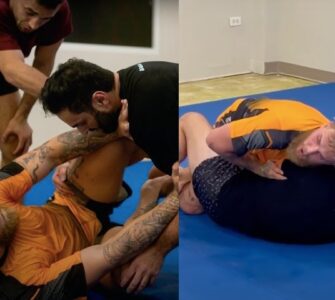Although every Jiu Jitsu journey is unique, most people do happen to make some common mistakes somewhere along the way. In this article we will look at 5 of the mistakes you can make during your BJJ journey and what you can learn from them.
- Thinking you’ve seen it all. The biggest of them all. With time and experience, you may get to a point where you start thinking you’ve seen everything there is to see and you cannot get caught off guard by anything new. If Jiu Jitsu is anything, it’s an innovative sport where it’s practitioners constantly come up with new techniques and means to achieve positions and submissions. In recent years we’ve seen new guards invented as well as old guards completely revamped in terms of style and techniques. With the increased exposure BJJ is getting, that only means more and more people will start on their journey and put their mind towards expanding the already enormous art. Always be open minded. Always look forward to seeing and learning more techniques. The diversity is one of the things making this sport beautiful, don’t shut yourself off to this. Not to mention the huge competitive advantage you get by being up to date with the latest techniques.

Figure 1. New techniques are being developed all the time. Stay open minded and up to date.
- Focusing on the belt. This usually happens earlier in your Jiu Jitsu journey, rather than later. Belts in themselves should never be your main goal in Jiu Jitsu. Belts come as an acknowledgement of your attitude, mental and technical progress , not as a result of you desiring one. Focus on your game, focus on training intelligently, be humble, show up constantly for training and the belts and stripes will come. You also have to consider that belts may come faster for some and slower for others, depending on your professor’s criteria. Expectations will likely be higher for a mid 20’s competitor than for a 40 year old practitioner who can only show up twice per week.
- The pressure of a higher belt. This often manifests itself at blue belt level and is widely known as blue beltitis. It has also been shown that most people quit at blue belt level. This is caused by unnecessary pressure and expectations you put on yourself to perform. One sure way to check for symptoms of blue beltitis is to see if you are comfortable tapping to white belts. It is well known that once you get your blue belt, you suddenly have a big target on your back, and most white belts will try to submit you with as much aggressiveness as they can. There will most likely be times when you will be caught. Get used to that and try to adopt the same attitude you had when you first started training. Remember: leave your ego at the door.
- Training injured. Feeling guilty already? Most of us are. Sometimes, due to the big passion for Jiu Jitsu, you may not take the best decisions for your body. Injuries happen eventually, sometimes small ones, sometimes bigger ones. It is extremely important to ensure that you recover yourself properly after being injured before training again. If you do not take care of your body, small injuries can become big injuries or even become chronic. In time, they will affect the quality of your training sessions as well as the quality of time. One way of getting the best from both worlds is to show up to training and only perform the drilling part of the session, if the injury allows. Strength and condition will also help your body’s resiliency and longevity, if done properly.

Figure 2. Recover your injuries before training hard again, otherwise you risk chronic injuries which will nag you for life.
- Not tapping. You’ve probably seen this coming. There will be a lot of times, likely in competitions as well, where you will be put in tight submissions and will have to weigh the risk/reward of tapping or trying an escape. In most cases, not tapping is not worth it. Once you get caught in a submission, statistically speaking, the chance of escaping is quite small, while the risk of a broken limb is quite high. Unless you’re a professional athlete who’s day to day living depends on the success in competitions, a broken limb and months of recovery are not worth it for a really small chance to escape a submission in a tournament that may have no real significance. Recently, Romulo Barral recently refused to tap at the Worlds, taking the risk of a broken foot for a chance at the gold medal. He didn’t win the match and he got out with a sprained ankle, however the injury could have turned out to be much worse.

Figure 3. Romulo Barral refusing to tap to a toe hold.

















